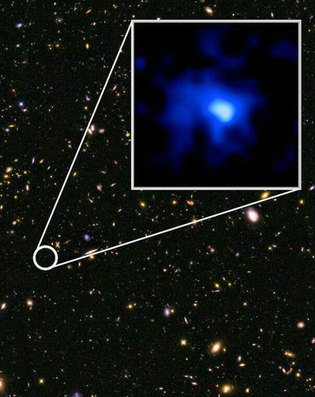 loading
loading
FindingsNoted Image by NASA, ESA, P. Oesch, and I. Momcheva, and the 3D-HST and HUDF09/XDF teams.View full imageYale development economist Dean Karlan and colleagues evaluated a method of lifting people out of extreme poverty and—as demonstrated in a threeyear field test in Ethiopia, Ghana, Honduras, India, Pakistan, and Peru—keeping them out of it. Writing in Science in May, Karlan and his colleagues report that the “Graduation” program, a method that provides people with a way to earn a living and the training and resources to sustain the endeavor, “unlocked a poverty trap.” Using the powerful MOSFIRE instrument on Hawaii’s W. M. Keck telescope, Yale astronomers and an international group found that the light from EGS-zs8-1, a blue-tinged galaxy, has been traveling Earthward for 13.1 billion years—the longest distance yet confirmed. The portrait of EGS-zs8-1, published online by Pascal Oesch and his team in the May Astrophysical Journal Letters, is a glimpse of the young universe. Cystic fibrosis is an often lethal genetic disorder that can destroy the key organs; roughly 70,000 children and adults are afflicted with it. But a gene-editing technique being developed by a team led by Yale radiation oncologist Peter Glazer, biomedical engineer Mark Saltzman, and pediatrics researcher Marie Egan may eventually provide a cure. In the April issue of Nature Communications, they describe a method of using nanoparticles to deliver repair molecules, which successfully corrected the defect in the DNA of both human airway and mouse nasal cells.
The comment period has expired.
|
|